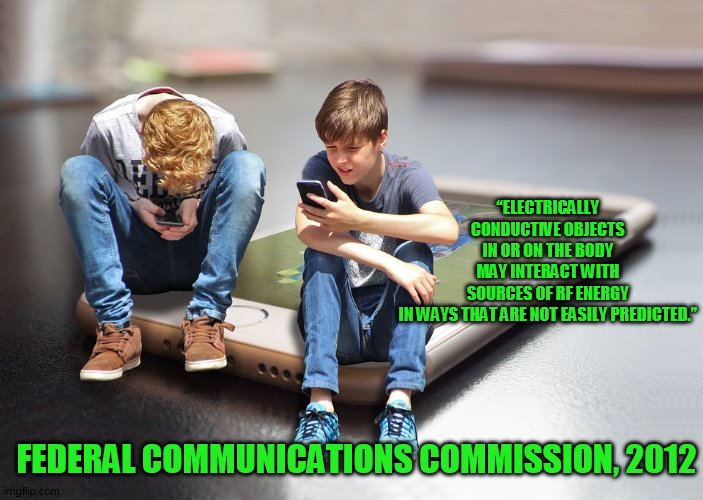 By B.N. Frank
By B.N. Frank
The Federal Communications Commission (FCC) is supposed to protect Americans by regulating the telecom industry. Instead it has catered to the industry for decades (see 1, 2). Numerous lawsuits have been filed against the agency because of this. In 2021, a federal court ruled in favor of organizations and petitioners that sued the FCC for NOT adequately protecting Americans from wireless radiation exposure (including 5G). The agency still hasn’t done anything about that though (see 1, 2, 3). Instead it continues to promote and fund the deployment of inferior, unreliable, unsafe, and interference-prone wireless and 5G (see 1, 2, 3, 4, 5, 6) – including via satellites (see 1, 2).
From RCR Wireless:
FCC kicks off new examination of wireless receivers
By Kelly Hill
The Federal Communications Commission has formally begun a proceeding to gather information about wireless receiver performance, and how it might encourage better performance in wireless receivers—an effort that has bipartisan support on the commission, and which could represent a turning point for the design of wireless systems.
While the FCC is only seeking information to start, the agency made clear that it could take a number of actions to act upon the information it gathers, from incentives or establishing best practices, to regulatory requirements.
The newly issued notice of inquiry seeks information to update the FCC’s understanding of the role of receivers in spectrum management and how the agency “might best promote improvements in receiver interference immunity performance that would serve the public interest.”
In its notice of inquiry, the agency noted that “while the Commission has typically focused its rules on the transmitter side of radio systems, as several recent Commission proceedings have underscored, receivers and receiver interference immunity performance play an increasingly critical role in enabling more efficient spectrum use.”
“Most discussions of spectrum efficiency are a one-way effort. They focus almost exclusively on transmitters,” said FCC Chairwoman Jessica Rosenworcel. “To avoid harmful interference, we typically have rules about how and when transmitters can operate. But wireless communications systems involve transmitters and receivers. It’s a two-way proposition. Both are vital. Both matter. So we need to rethink our approach to spectrum policy and move beyond just transmitters and consider receivers, too.
Rosenworcel added, “Receivers that are not sufficiently resilient can make it more difficult to introduce additional services in the same or adjacent airwaves”—which is exactly the issue that the FCC ran into in the run-up to the activation of C-Band spectrum by AT&T and Verizon, when the Federal Aviation Administration and the aviation industry pushed for the delay and geographical limitation of C-Band deployments due to fears about interference with legacy altimeters; more specifically, that the old and difficult-to-replace altimeters would be impacted because their receivers would be unable to filter out the new, terrestrial C-Band 5G signals. Old receivers, Rosenworcel continued rather pointedly, “can diminish the spectral environment and shut out new uses before they even begin. There is too little in our existing spectrum policies that recognizes this truth. There is also too little that incentivizes users or manufacturers to invest in better quality receivers. But as we expand the use of our airwaves and wrestle with different uses in adjacent spectrum, we need to give consideration to the role of reception technology.”
The Commission gathered similar information in 2003, but the new inquiry will provide an update on new techniques, technologies and research related to receiver performance. Rosenworcel specifically thanked Commissioner Nathan Simington for his contributions to the inquiry; Simington, a Republican, has been a driving force for the consideration of receiver performance metrics—although he has also said that he hopes that ultimately, the mere consideration of regulation by the commission will nudge industry to act on its own to improve receiver performance.
Another lawsuit filed against the FCC revealed that Americans have already paid for the deployment of safer, more secure, more reliable connections via fiber optics to the premises and copper landlines. But whatever!
Activist Post reports regularly about the FCC and wireless technology. For more information, visit our archives and the following websites:
- Wireless Information Network
- Americans for Responsible Technology
- Electromagnetic Radiation Safety
- Environmental Health Trust
- Physicians for Safe Technology
Become a Patron!
Or support us at SubscribeStar
Donate cryptocurrency HERE
Subscribe to Activist Post for truth, peace, and freedom news. Follow us on SoMee, Telegram, HIVE, Flote, Minds, MeWe, Twitter, Gab, What Really Happened and GETTR.
Provide, Protect and Profit from what’s coming! Get a free issue of Counter Markets today.


Be the first to comment on "FCC Gathering Info on Wireless Receiver Performance; Hasn’t Done Squat in re Lawsuit It Lost for Not Updating Wireless Exposure Limits"